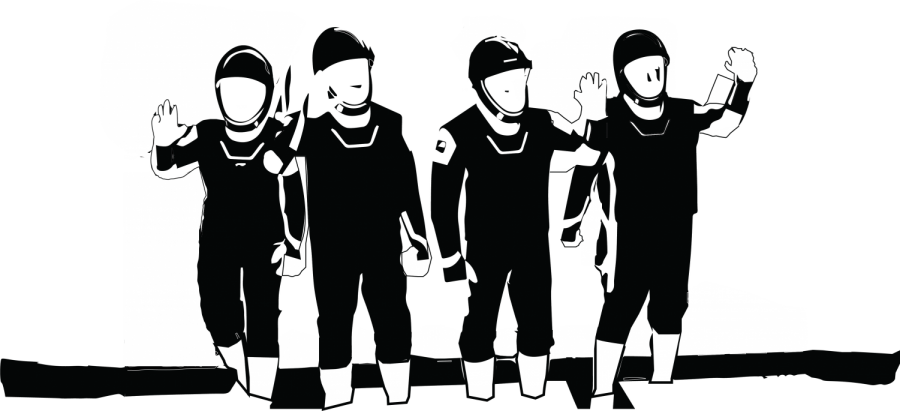Space Force lands on campus as part of ROTC program
January 26, 2021
Launched in 2019, the United States Space Force (USSF) has come to campus as part of the South Dakota State University Air Force ROTC program.
The USSF was established within the Department of the Air Force, according to the Space Force website, and is overseen by the Secretary of the Air Force.
According to the USSF mission statement, “the USSF is a military service that organizes, trains and equips space forces in order to protect U.S. and allied interests in space and to provide space capabilities to the joint force”
The organization of the Space Force as an arm of the Air Force finds no exemption at SDSU.
“Just like in the Navy, the Marines and Coast Guard are under the Navy, Space Force is under the Air Force,” Assistant Professor of Aerospace Studies and Recruiting Officer Bethany Gross said. “We can have people come into the Space Force or Air Force and they are going to learn virtually that same thing, and they will just split when they graduate to whatever their components are.”
Within the Air Force ROTC program, an increased emphasis on space is starting to be implemented.
“We are adding more space content … we spent a little bit of time on space, but I think you are going to see a lot more in our curriculum on content that is space driven,” Gross said.
In addition to space content, cyber security is also becoming a key factor in the Air and Space Force ROTC. Gross said informational based labs and exercises are being tailored to meet the increased emphasis on cyber and space.
Career outlooks within the Space Force include satellite operators, cyber operations, communications, engineering, intelligence and contracts and accusations, Gross said.
The SDSU Air Force ROTC program averages 50-55 students a year and graduates between 5-10.
Overall, the Air Force ROTC program focuses on developing critical thinking and problem-solving skills, in addition to more military based skill sets, by utilizing hands-on lab experiences.
“Whether it’s a war scenario or just an everyday life scenario, we are going to put everyone in that group in a position to solve that problem,” Gross said.
Interest from prospective high school students and current college students into the ROTC program has been bolstered by the introduction of the Space Force.
“I think it is generating a lot of interest and excitement,” Gross said. “There are people absolutely asking about it … Everyone I talk to, from high schoolers to folks in college, [Space Force] always gets brought up.”
Gross says the marketing of the new department takes credit for part of the interest and hype around the Space Force.
“With the formation of the Space Force, when it comes to the symbols and the verbiage, there is a lot of heritage to ‘Star Trek,’” Gross said. “That gets people excited.”
For students looking to get involved in the Air and Space Force ROTC program, enrolling in courses AIR 101, 102, 201 or 202, which are free, is a good introduction to the program, Gross said.
“Neither taking the class or joining the program require students to join the military or serve after graduation, but they are a great way to grow your leadership, team-building and problem-solving skills,” Gross said.






















